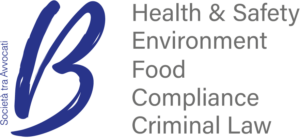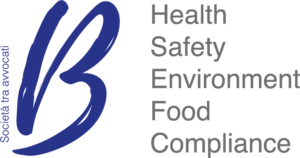1. Introduction
On June 14, 2023, the European Parliament’s Committee on Environment, Public Health, and Food Safety (ENVI) approved the text of the “Proposal for a Regulation of the European Parliament and of the Council establishing a framework for setting eco-design requirements for sustainable products and repealing Directive 2009/125/EC” (hereinafter referred to as the “Proposal”). The text is now awaiting a vote in the plenary session to initiate negotiations between the Institutions according to the standard legislative procedure of the European Union.
The Proposal is a part of the broader context of the European Green Deal and the Union’s efforts to combat “Fast Fashion”. The textile sector, in particular, is identified by the EU as one of the industries with the highest environmental impact, not only due to resource consumption but also because of the low recycling rates.
In 2020, the European Commission introduced the Circular Economy Action Plan (CEAP) and set initial timeframes for achieving the goals of a “Green Europe.” This plan includes a specific focus on the fashion industry, known as the “European Strategy for Sustainable and Circular Textiles” (hereinafter referred to as “SSCT”), which was presented through a communication from the Commission on March 3, 2022 (COM (2022) 141 final).
Within the SSCT, key actions for sustainable and circular textiles include the introduction of mandatory eco-design requirements, now incorporated into the Proposal. These requirements aim to extend the lifecycle of textile products to significantly reduce their impact on the climate and the environment.
In this context, the Proposal introduces several innovations, not only related to eco-friendly design but also concerning the creation of digital passports for textile and non-textile products and the implementation of a disclosure obligation regarding unsold consumer products for all entities defined as “manufacturers” in the Proposal, which includes any natural or legal person involved in product manufacturing, design, marketing, or importation from third countries for market placement.
2. The main objective of the SSCT
The primary focus of the SSCT is recognizing that «as clothing comprises the largest share of EU textile consumption (81%), the trends of using garments for even shorter periods before throwing them away contribute the most to unsustainable patterns of overproduction and overconsumption».
The production and consumption of textile products have a considerable negative impact on the environment in terms of water and land use, as well as climate change. Moreover, the preference for lower-quality fabrics to reduce costs has led to the rise of “fast fashion,” encouraging consumers to purchase more items, only to dispose of them quickly, resulting in additional environmental and climate impacts from unsold items and discarded products.
The textile sector also faces social challenges, including issues such as child labor, climate change, and the impact of global events like the Covid-19 pandemic and the Russia-Ukraine conflict. These challenges require systemic solutions in line with the European Green Deal’s vision of achieving sustainable, climate-neutral, energy-efficient, and resource-efficient growth.
The main goal of the SSCT is to bring to the EU market, by 2030, «textile products … that are long-lived and recyclable, to a great extent made of recycled fibers, free of hazardous substances and produced in respect of social rights and the environment». This aims to create «a competitive, resilient and innovative textiles sector [in which] producers take responsibility for their products along the value chain, including when they become waste».
In this sense, extending the lifespan of textile products is crucial for reducing their environmental impact. To achieve this, product design plays a significant role, along with the new provisions on sustainable products and eco-design requirements that apply to a wide range of products.
3. Scope of the Proposal
Compared to the previous Directive 2009/125/EC (the Eco-design Directive), which focused on eco-design requirements for energy-related products, the new Proposal aims to expand this approach to a wide range of products, with only a few exceptions. These exceptions include medicinal products, veterinary medicinal products, food and feed, living organisms, reproduction products, and human-origin products.
The goals of the Regulation Proposal are to reduce the environmental impacts of products throughout their life cycle and improve the functioning of the internal market.
4. Key Innovations
Among the main innovations in the Proposal, notable elements include: the development of eco-design requirements, the introduction of digital product passports, and the implementation of a disclosure obligation regarding unsold consumer products.
a) Eco-design Requirements
The Proposal establishes a general framework for adopting eco-design requirements under art. 5. These requirements aim to improve various aspects of products, including:
- durability;
- reliability;
- reusability;
- upgradability;
- reparability;
- possibility of maintenance and refurbishment;
- presence of substances of concern;
- energy use or energy efficiency;
- resource use or resource efficiency;
- recycled content;
The eco-design requirements encompass performance requirements (art. 6) and information requirements (art. 7).
b) Digital product passport
The information requirements specify that products can only be placed on the market or put into service «if a product passport is available in accordance with the applicable delegated act adopted pursuant to Article 4, 9 and 10 of the Proposal». The requirements for the passport are numerous. Of major interest are: the information to be included; the manner in which the product passport is made accessible to customers before they are bound by a sales contract; the actors that shall have access to the passport information and the information made accessible; the actors that may introduce or update the information in the passport.
Additionally, a register maintained by the Commission will store product passport information, allowing businesses and consumers to make informed choices and enhance communication within the value chains. The Commission assures that the passport will take into account the nature of the product and market, respecting intellectual property rights and allowing data limitation when necessary.
c) Disclosure obligation
Lastly, art. 20 introduces a disclosure obligation regarding unsold consumer products. Economic operators disposing of unsold consumer products must disclose specific information, including the number and type of discarded products, reasons for discarding, and the method of disposal in compliance with the waste hierarchy as defined by art. 4 of Directive 2008/98/EC.
This information must be published on a publicly accessible website or through alternative means until applicable delegated acts for the category of discarded unsold consumer products are approved. This requirement aims to reduce the waste of value and resources associated with the destruction of unsold goods, combating greenwashing and promoting transparency in the industry.
Conclusion
The Proposal aligns with the European Union’s broader objective of becoming the first climate-neutral continent by 2050. Like other ambitious sustainability initiatives, it will impact both domestic and global markets and influence consumer choices.
To meet the Proposal’s objectives, most manufacturers will need to redesign their products with a focus on durability, reusability, energy efficiency, and recycling. This shift toward sustainable production will require manufacturers to reevaluate their design standards and conduct comprehensive value chain audits.


